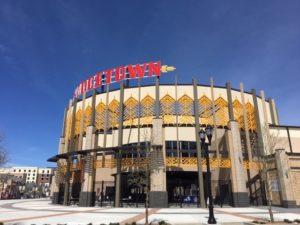Election Day came and went across Texas this past weekend. In Amarillo, the returns were fruitful for those who like the direction City Hall has taken the past couple of years.
Among those who are gratified is a group called Amarillo Matters. The political action committee endorsed all five City Council incumbents; they all won re-election.
But as usual, I am hearing some bitching/griping/sour graping from afar, way over yonder in Collin County, where my wife and I now live.
Some folks think Amarillo has forked over enough money to get the City Council to do its bidding. They are unhappy about it.
OK, let’s take a look briefly at Amarillo Matters. Shall we?
It’s mission statement is simple. It states: Amarillo Matters will work to identify, articulate and facilitate positive opportunities for Amarillo and the surrounding area.
Sounds sinister, right?
Oh, then there’s this from its vision statement, which declares in part: Amarillo Matters will seek out and support leaders of the highest integrity. We will look for leaders who know what makes us great and have the desire and knowledge to make us better.
Nefarious, don’t you think?
Look, I no longer have a dog in that fight. We sold our home in March 2018. We have moved away. We have set up a new life in Collin County. However, I do take a great interest in the city where we lived for more than two decades. It is a city in which I was charged with the task of commenting on its direction during my nearly 18 years as editorial page editor of the Amarillo Globe-News. Thus, it is hard for me to let go.
Amarillo Matters was right to get involved when it was founded in 2016. A group of leading civic and business leaders didn’t like what it saw when a new majority took control of the City Council in 2015. I shared their concern as I watched it during my final years in the city.
The city has made tremendous progress since the 2017 election, when voters elected a brand new City Council. Is it wrong for Amarillo Matters to want a council that will lead the city toward a future that remains largely unknown, but which is taking shape in real time?
Amarillo appears to be moving forward. How is that a bad thing?








